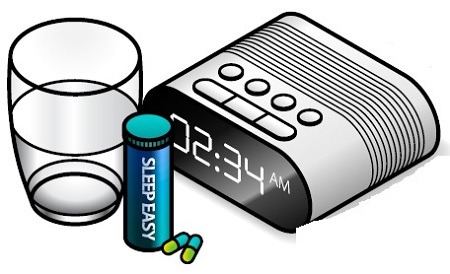
I’m a box. My long-term friends tell me I’m attractive, well built, capable, reliable, and easy to work with. I interface nicely with others, speak multiple languages and dialects, and solve problems. My positive traits and habits are well known and accepted by myriad industry professionals, pumped up by my many marketers, supporters, followers, and fanboys. You see me on YouTube, Facebook, Twitter, and LinkedIn; in systems, in trade magazines, and all over manufacturers’ websites. I’ve grown with time and modified my looks and skills to meet the changing needs of modern communications. I truly believe people like me. I’ve been told this many times.
I’ve been a good box and a good associate, so why am I sleepless, eyes pinned to the inner darkness of my covers? I know the answer. I just don’t like the answer, and neither do many of those kind humans whom I love and support, because the answer will cause pain in many others and me.
I must change. Not just change for a simple tweak of my performance or abilities, or like some sort of extreme makeover; this one is existential and a path my older siblings have walked before. Now it’s my turn, if I can adapt. And because you know me, like how I work, and utilize me, it’s also your turn to change as well or be left on the shelf. I may not be able to survive, but perhaps you can because we’re in this together. Let me explain.

You see I’m nothing without you, the integrator, and user. I live to fulfill your needs, and I’m sorry it has come to this, but forces beyond our mutual control are in play. Like many pernicious life events underlying change, there is a driver with a mission I really didn’t fully understand at first. They call this the “Network.” For me, this came simply as a neat, little, new connector that my engineers placed on my backside called an RJ45 jack—cool, I’m all about connectors, and this little guy seemed to be additive and subordinate to my primary mission of AV signal processing and routing. I liked the arrhythmic feel of packetized bits and bytes running alongside my analog and digital circuits. Still, I didn’t see it coming. My engineers just smiled and beavered away in the lab, and I naively thought it was all to improve what everybody knew me already to be. What a fool I was.
Hanging out in the lab recently—which really is one of my favorite places, with the tentacles of typical AV connectivity plugged into me sending signals around like so many IV lines in and out of my chassis—I was surprised to see my network cable removed and plugged into another black box, whom I thought of as a bit of an odd newbie-lab-rat friend; his only connectors were a few computer and network interface jacks. “Weird,” I thought, how’s that going to work? Where are all the chassis slots and cards? Where are all the different connectors for getting signals in and out? Then an erudite audio digital signal processor on the next bench clued me in (he had a decidedly British accent, at least to my superior bandwidth audio jack).
“It’s the network mate. It’s all algorithms and high-performance core processor chips now. Didn’t you get the memo?” I had. I read the engineering agenda like a romance novel and thought it was all great fantasy. “I’ve been Intel-based for years and boy, the SHARCS are mad about that. The new bloke with those RJ jacks uses Blue River chips,” continued my DSP pal.
Sharks, Intel, algorithms, cry me a river! What does all of this mean to me, I wondered? Am I not state of the art? Then, in walked the marketing department, and the light finally went on. They are a really scary bunch of bananas. They have promoted me well and made me king of systems, but I’ve seen them in action with some of my older peers, who just disappeared one day, never to return. Now it seems to be my turn.
Needless to say, if you haven’t figured it out already, I’m looking for work and it’s getting tougher to find a job. The newbie-lab-rat black box is the darling of the engineers, but I blame the marketers who let him out of the lab and turned on me like rabid dogs. They are touting him as the way of the future by using just a gigabit network connection and a power cord to do everything I do, and much more—like not needing an external control system. I guess my chassis, great build, and detailed digital engineering with all those different protocols and dedicated connectors just isn’t exciting enough for them anymore.
As I said earlier, I’m capable and reliable, but I see the writing on the whiteboard: I’m toast. It’s just a matter of time.
Adding insult to injury, the newbie-box ran off with my girlfriend; she’s a chippy instrumentalist from Texas. I need a shot of silicon just to calm down, and then I’m hitting eBay for a while. Need to find work somewhere.
Steve Olszewski (steveo@dimensional.net) is vice president of Dimensional Communications and Stealth Acoustics, a systems integration firm and speaker manufacturer in the Seattle area. His integration firm specializes in instructional communication systems, information networking, and corporate audiovisual systems. He is a past director for NSCA.
AV Convergence
Everyone knows that at some point complete AV systems convergence to the network will occur (except for “transduction points,” where information enters or leaves our senses). The trick is to navigate this ongoing and rapidly increasing change thoughtfully and move intelligently, even proactively when the time is right for your company. Here are some items to help determine when it’s right for you to fully embrace AV/IT convergence:
Check the features and functionality carefully. Systems moving to the network follow a typical trajectory of initially doing old things badly, only in new ways with new problems. The siren call of the network can blind one to the need to carefully check new network AV devices for the proper suite of capabilities expected from traditional systems.
Serve the IT world. While you may not have to do Layer 7 support for your customers, your staff must at least know what this means (generally installing desktop apps and supporting the user experience). One might even consider forming a full IT services department. IT is messy and sometimes eminently frustrating, but someone has to do it, and it deeply affects your AV business and its future.
Do detailed cost differentials of IP systems verses traditional systems. Once you know what devices can do the job, either traditional or IP-based, you need to compare the costs. Doing a thorough analysis of the costs as well as the benefits of a solution not only keeps you competitive, but your customers will appreciate your consultative approach to solving their problems.
Know your customers’ goals and technical “style.” Some customers live on the cutting edge of technology; others lag behind. It’s the classic bell curve of adoption, and knowing where your customers sit on this curve can help you help them make better AV technology decisions. An increasing number of customers want to keep their eyes on the benefits of leading-edge technology by readily adopting network-based IP AV systems, as long as they fully understand those benefits and costs. Still, time will eventually put all customers on the convergence curve somewhere, albeit perhaps on the trailing edge. Where you fit in all of this is up to you.
—SO
